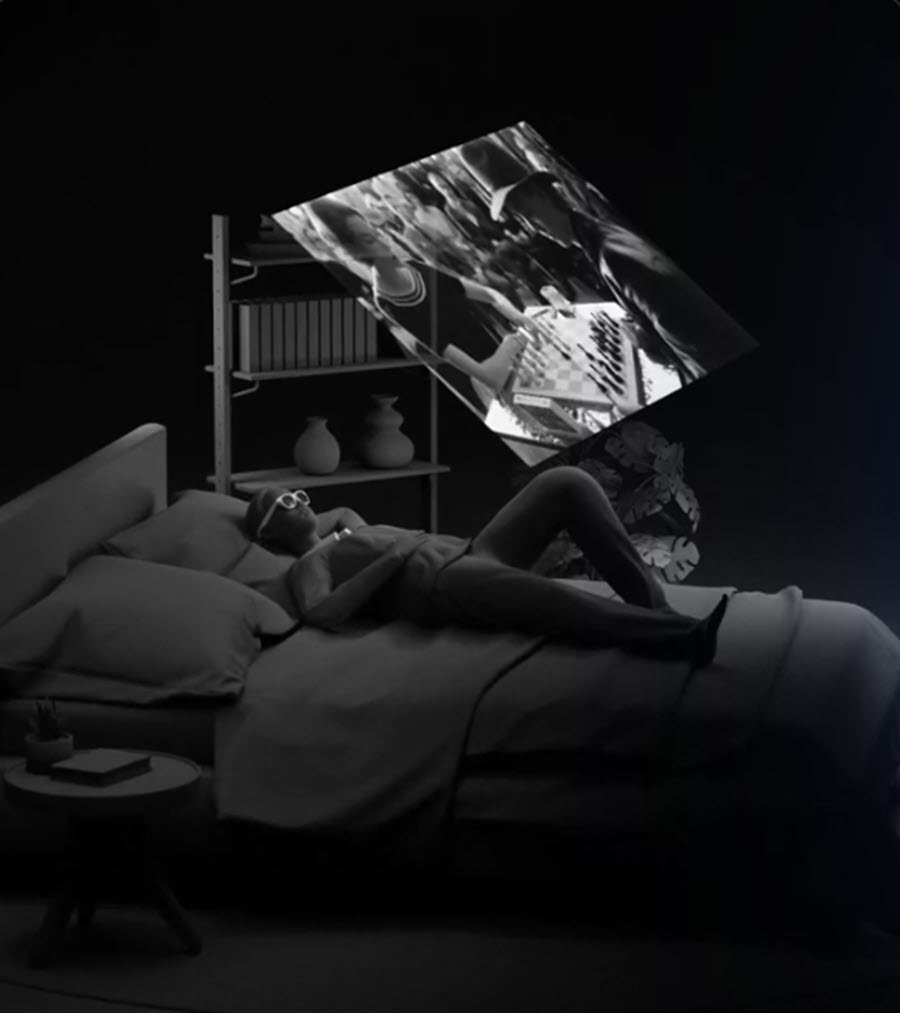
You can buy glasses today that show you a huge screen hanging in the air a few feet in front of you. The display is crisp and clear. It looks like you’re watching a movie or playing a game on a 300-inch TV. Add some earbuds and the experience of sitting in a cramped airline seat changes into something expansive and immersive.
They are promoted as AR glasses. Is it augmented reality?
Hush. Let’s not quibble about pesky definitions. It’s a wonderful experience and that’s what counts. You can still see the real world around the edges of the virtual screen, so that’s kind of like augmented reality, right? We’ll talk more about that in the next article.
There are several AR glasses on the market today. Each has its own characteristics and peculiarities. They work well enough that it’s time for enthusiasts to take a look.

Xreal (formerly Nreal, long story) has sold two hundred thousand AR glasses. I’m wearing the Xreal Air glasses as I write this. The Xreal glasses are less than four hundred dollars on Amazon. They resemble dark glasses, albeit with chunky stems and a cable attached to the rear of one arm, so there’s still a pretty serious nerd factor but it’s far less severe than full VR devices.
Similar AR glasses are available today from Viture, Rokid, and TCL. More are coming as the tech becomes more mature. The most recent announcement came from Lenovo, which apparently will introduce its own AR glasses as a companion for a forthcoming portable game console.
The glasses use cutting edge tech to display a teensy tiny image on a teensy tiny screen in front of your eyes. The display appears to be large because it’s really close to your eyes.
Gamers are primary targets for this first generation because the glasses might connect to Nintendo Switch and Steam Deck gaming consoles. They also make great media devices because they might be able to be connected to PCs, Macs, iPads, and some (but not all) Android phones to mirror the screen.
You caught me. You noticed how careful I was to say they “might” be able to connect to those things. It ought to happen with no fuss but these are early days and there are tricky bits everywhere. Maybe the glasses plug directly into the Switch, or Steam Deck, or even your phone – but maybe not, because not everything works. Maybe the glasses plug in but they block the port used for charging and batteries run down and tempers run high. Maybe it helps to have an extra device in your pocket – the Beam for Xreal Air glasses, the neckband for Viture glasses, the battery pack for Apple’s Vision Pro next year. There are active Reddit forums full of tips about adapters required to make certain combinations work.
Did I mention glasses? These cool AR glasses don’t fit over regular glasses. If you need vision correction, you might have to order special prescription lenses from Lensology or VROptician or one of the others that have sprung up in the last couple of years for this niche. I got some for the Xreal glasses and a separate set for my Quest Pro VR headset. They work for me. Viture glasses have built-in vision correction that works for some people but not others. Astigmatism is hard to correct in all of the AR/VR devices. Apple recently said early buyers of the Vision Pro headsets will have to visit an Apple Store to get the proper fit for the headset and make sure vision correction is handled up front.
You read through all those warnings and dismissed the whole category, right? Not so fast.

Sure, there’s some maturing to do, but these are products you can buy today. Invest, say, five hundred dollars and you’ll have glasses that you can slip on during a commute or next to your sleeping partner or in your living room to watch a movie or a game on a huge screen. Or you can see your computer screen mirrored in the air in front of you, like I’m doing now, and get work done.
It’s not the same experience that Apple promised for the Vision Pro but it has some advantages over Apple’s headset. (1) You can buy eight pairs of Xreal glasses for the cost of the Vision Pro. (2) You can buy the glasses today, not six or eight months from now. (3) The glasses look like dorky sunglasses, which isn’t great but they’re downright stylish compared to Apple’s marriage of ski goggles and a swim mask.
Most importantly, they deliver a fair portion of the same experience. Not all of it, sure, but sitting in my comfy chair watching a movie from my PC displayed on a giant screen is very sweet.
The clarity of the display on the teensy tiny screen is a marvel. Text is crisp and readable when I use the glasses to mirror my computer screen. I can do work easily.
AR glasses are a good fit today for a few people: tech enthusiasts and gamers with a few hundred dollars who would appreciate a giant screen created by a highly portable device.
The upcoming Quest 3 VR headsets will be more or less in the same price range. They will also be an excellent choice for gaming and media consumption. But the Quest 3 headset, like Apple’s Vision Pro headset next year, is far less portable than the AR glasses and seriously, VR goggles are simply unable to be worn in public if you have a shred of self respect.
Fun new technology is at your fingertips. Why would you watch movies on that measly 75 inch TV across the room? Think about getting a really big screen.
There’s good news and bad news about what these AR glasses teach us about the state of the art for augmented reality. We’ll talk about that in the next article.
